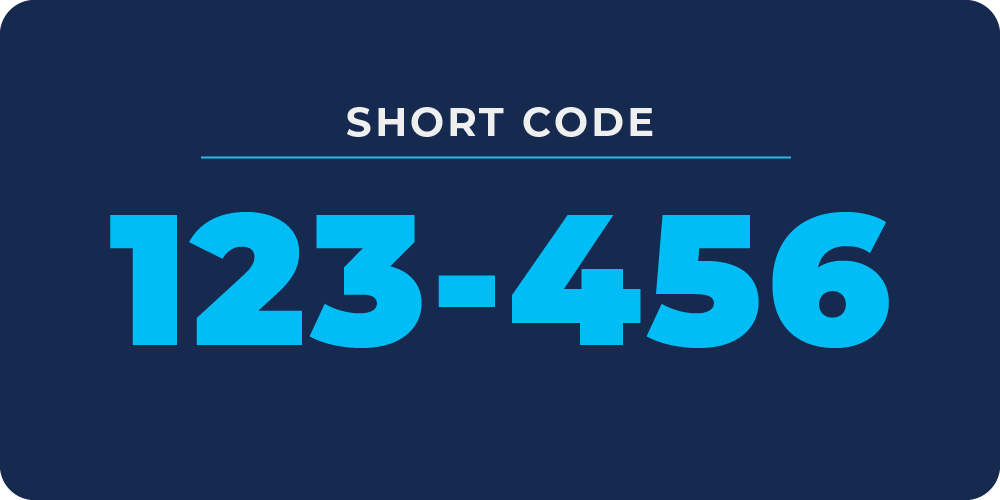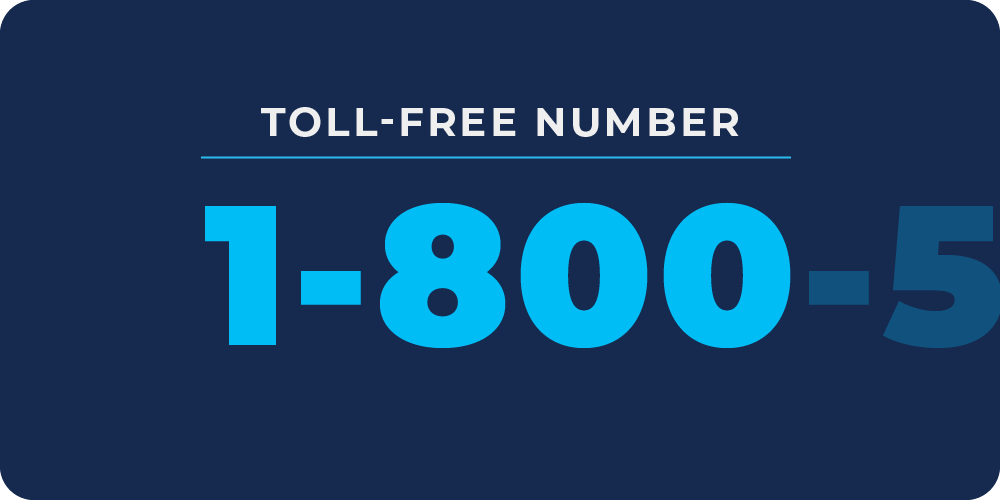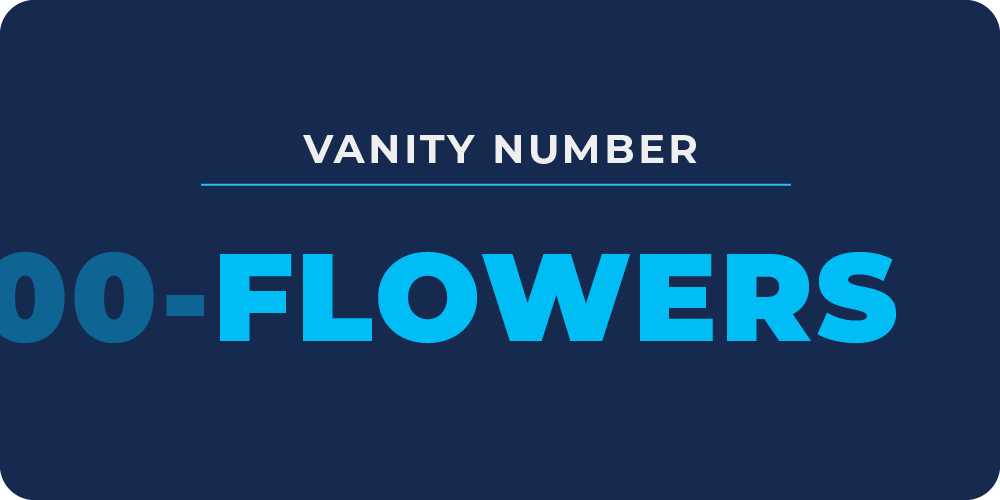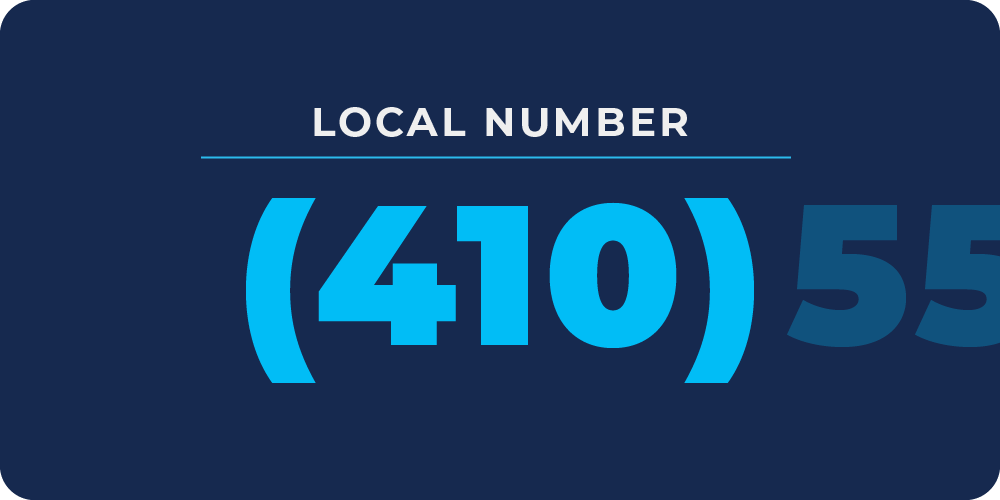Phone Numbers for Marketing (Everything You Need to Know)
Phone numbers for marketing to a real revenue-driving marketing strategy. From figuring out which sources drive the best leads to sending targeted SMS text promotions, marketing phone numbers and call tracking are proven to
- Drive better connections with your customers and
- Unlock insights that save you time and money.
If you’re new to using phone numbers for marketing or aren’t sure what call tracking is, you’re in the right spot! Together, we’ll take a look at call tracking and the enormous value marketing phone numbers offer your business. Even if you already know a thing or two about phone numbers and call tracking, read on to learn new ways to maximize savings and increase profits with phone numbers for marketing.
How Do I Use Phone Numbers for Marketing?
Marketers and sales teams can use phone numbers in a few different ways, but the big one is call tracking.

So What is Call Tracking?
Call tracking uses unique phone numbers to connect every call that comes into your business to the exact source that drove it. Whether it’s a bus wrap using a static number or a phone number on a Facebook ad that employs dynamic number insertion (DNI), call tracking shows you which callers came from exactly which ads and channels. With advanced call tracking, the phone number a visitor sees from one of these ads channels is instantly swapped for a “real” phone number that routes them to one of the business’ phones.
For example, someone who clicks on a LinkedIn ad will see a different phone number than someone who comes to your website through a Google search. This enables businesses to extract deeper insights into which marketing efforts are working best (and which are falling short).
Knowing who comes from which ad source helps you do more with your marketing budget. When you know exactly which ads, campaigns, and channels are roping in your best leads, you can focus on those efforts and ditch the others wasting your money.
Want to stretch your marketing budget even further? Watch our video, Call Tracking to Stretch Your Marketing Budget, to learn how.
As you can imagine, the benefits of the information you get from call tracking can be hugely impactful. From knowing which ads are driving the highest number of qualified leads to understanding the keywords your target audience searches for most, call tracking can help you in:
- Driving more of your best leads
- Optimizing your paid ads budget
- Gaining a deeper understanding of your customer
- Reaching your target audience where they are
- Deepening connections with personalized customer service
Organizations that invest in these outcomes through call tracking can outmaneuver their competition and create a memorable customer experience.
According to Gartner, giving customers a personalized experience tailored to their needs is still a challenge for 63% of digital marketers.
Types of Phone Numbers Used in Marketing and Call Tracking
Despite the tremendous benefits of using phone numbers for marketing, lots of marketers have given up on them. To them, it’s all about email or paid marketing. And, often, it’s a lack of understanding of what call tracking is and how using different types of phone numbers can change your marketing ROI.
Let’s explore the types of phone numbers in marketing and some use cases.
First, it’s important to clarify that there are different types of phone numbers in marketing and there are also different ways to use phone numbers in marketing. Let’s take a look at both.
Types of Marketing Phone Numbers
Phone numbers have come a long way since their first use in the late 1800s when this sequence of random digits was first assigned to replace subscriber names for switchboard operators. In those early days, phone numbers consisted of only one or two numbers and maybe an alphabet letter thrown in here and there.
Today, there’s a huge variety of phone numbers. From numbers that spell out the name of your business, product, or service (vanity numbers) to traditional numbers with local area codes, there are many types and many ways to use these phone numbers for marketing.
- 10DLC
10 digital long codes or 10DLC are the standard phone numbers most people use. Think of your cell phone number or landline number. These are the numbers that many businesses use for marketing because of their high-volume, application-to-person (A2P) messaging abilities.
10DLCs are the most cost-effective option for shortcodes (which can be expensive). With the newer compliance and regulatory controls in place for 10DLC A2P, this type of phone number option has higher throughput and deliverability and include both local and toll-free numbers.
Note: For 10DLCs you have to complete a registration process to send texts. 10DLC A2P registration improves deliverability rates – if you don’t register your numbers, your texts can get blocked.
Watch our video How to Improve Deliver Rates with A2P Registration to learn more.
Use Cases of 10DLCs for Marketing:
- Better Customer Service & Support
- Send automated appointment reminders, order confirmations, time-sensitive alerts, promo codes, and more
- Provide streamlined, timely customer support and communication
- Personalize & Target Communications Globally
- Pair with advanced AI tools (like CTM’s AskAI) and call tracking to automate and personalize next steps like sending a text message promo
- Develop target campaigns based on insights and segment sending via different 10DLC numbers
- 10DLCs have international appeal. If your organization operates globally, these global phone numbers are a must to ensure your international communications are on point.
- Expand Lead Generation Efforts
- Increase and supplement lead-generation efforts with targeted messages for each specific audience segment
- Short Codes

Short code numbers are popular abbreviated phone numbers loved for their high deliverability rate and mass texting capabilities. Rather than the 10 digits as in 10DLCs, they usually have just five or six and are popular with larger companies that rely on SMS marketing.
However, they can be very expensive. Short codes are best used for large marketing campaigns or similar efforts where organizations want to send the same message to a mass group of customers and/or prospects.
Use Cases of Short codes for Marketing:
- Maximize Marketing Campaigns
- Use short codes if you’re sending one message to a mass group of people to get the best deliverability rates and throughput.
- Grow SMS text subscribers list
- Enhance Security & Compliance
- Send two-factor authentication (2FA)
- Inform Product, Dev, & Marketing Teams
- Create polls to find out more about topics like:
- Customer service experiences
- Product updates, enhancements, and feedback
- How marketing messages are being perceived
- Create polls to find out more about topics like:
- Toll-Free Numbers

Toll-free numbers enable customers and prospects to reach out to a business without incurring any call-related charges. They’re popular for companies that want to make it easy for customers to connect with them no matter where they are. Toll-free numbers are a great option for businesses with a national reach.
Toll-free numbers usually include the prefixes, 800, 833, 844, 877, or 888. Companies often choose these numbers to make it easier for their customers to communicate with them, stay connected, and communicate brand trustworthiness.
Use Cases of Toll-free Numbers for Marketing:
- Contact Centers
- Use toll-free numbers if you have a call center or contact center to make it easy and convenient for customers to contact you.
- Toll-free numbers can support voice in addition to SMS texts so you have both options
- Expanding Your Reach
- Shortcodes aren’t able to text certain countries (for example, Canada). Toll-free numbers let you send SMS messages to these places blocked from receiving shortcode texts.
- Consistent, Branded Communication
- Use toll-free numbers to communicate with customers and employees alike. Toll-free numbers allow two-way communication and work great for keeping employees in the loop, handling logistics coordination, sending delivery confirmations, and much more.
- Vanity Numbers

Vanity numbers are popular because they are memorable and can support branding efforts for companies. These types of phone numbers for marketing spell out a word or phrase. Vanity number examples include, 1(800) FLOWERS, 1(800) CONTACTS, etc.
While many organizations want vanity numbers with an 800 prefix, most of these 800 vanity numbers have been snapped up. However, toll-free vanity number options are still available and allow companies to create catchy phone numbers that prospects and customers can remember.
Use Cases of Vanity Numbers for Marketing
- Level Up Branding Efforts
- Marketers looking to increase their brand awareness may opt for a vanity number to use with large campaigns.
- Maintain Consistency in Communication
- Businesses with multiple locations (especially those that are nationwide) use vanity numbers to establish a presence and build trust, as well as make it easy for customers to contact them.
- For certain businesses, like home services or healthcare, customers need to be able to connect with you no matter where they are or where they go. Vanity numbers are great for this.
- Boost Visibility
- Along with solidifying your branding, vanity numbers boost your business’s visibility. Since vanity numbers are more memorable than an average phone number, they help increase your brand’s memorability and awareness. Both are key to growing and maintaining your organization’s success.
- Local Phone Numbers

Local phone numbers for marketing are ideal for companies that want to establish a local presence and trust with customers in a specific geographic area. Whether a national brand that wants to convey a more neighborly feel or a local mom-and-pop wants to engage with their community, local numbers tell customers that you are close by.
These numbers are particularly beneficial for certain types of businesses that need their audience to know they are just around the corner. These include home services, healthcare, real estate, legal, restaurant and delivery services, etc.
Use Cases of Local Phone Numbers for Marketing
- Establish a local presence
- National organizations and franchises can choose local phone numbers for each of their locations so customers and prospects know they are right around the corner.
- Build trust
- Using a local phone number helps your prospects and customers see you as one of their neighbors and are invested in the community
As you can see, different types of phone numbers can help your business connect with your target customers, market better, and – eventually – sell more.
But, how do you know where to start? And which type of numbers are the best for your business?
Let’s find out how to choose the best phone numbers for marketing your business.
How to Choose the Best Marketing Phone Number for Your Business
It goes without saying that before you start using phone numbers for marketing it’s important to have
- Clear goals established
- Astrategy to reach those goals
- An assessment and KPIs in place to measure your success and efforts.
Here are some questions to ask your team as you get started.
- Who is your target audience?
Take a look at who it is you want to reach. Different types of phone numbers are best for different target audiences. You can use one type of phone number to connect with one of your segments and another to reach a different group.
For example, say you have one group of customers located in the United States and Canada and another group who are in the United Kingdom. You can choose a toll-free number for the first group in the states and Canada and a 10DLC for the second group across the pond.
This way you’re fine-tuning messaging to your different custom groups and their unique needs.
- What is your budget?
Certain phone numbers (like shortcodes) can be expensive. And while you may want to buy a shortcode or vanity number, your budget may make it difficult. Shortcodes, for example, are expensive to lease and carry registration fees, platform costs, and message send costs.
10DLC and toll-free numbers are less expensive options and generally offer the same capabilities.
- What is your use case?
This is one of the most important questions to ask. How will you be using these numbers for marketing?
Will you be sending SMS text messages?
Do you want the messages to be two-way or one-way?
Are you sending bulk text messages?
Do you want both voice and text functionality?
As mentioned, each type of marketing phone number has different capabilities as well as use cases. For example, if you’ll be sending bulk messages only, you may want a shortcode. Conversely, if your use case is for bulk texts with two-way messaging functionality, then 10DLCs are the way to go.
- Do you want to have voice and text options?
Certain phone numbers are only SMS text capable but others offer both text and voice capabilities. Be sure the type of phone number you choose offers both if you’ll need those.
- How many messages do you want to send at once?
If you are sending a limited number of SMS messages then you will want to explore 10DLC and toll-free numbers. However, if your organization wants to send out messages in bulk (and budget allows), shortcodes may be the best option to ensure the most messages are delivered.
Shortcodes can deliver up to 500 messages per second. 10DLC is next in capacity with registered numbers delivering 180 messages per second and registered toll-free numbers coming in with 150 messages per second.
- Do you meet the requirements for number registration?
Regulations in the past few years have increased–and continue to do so. To use certain phone numbers for marketing purposes, like shortcodes and 10DLCs, registration is required.
Some international and smaller-sized businesses may not have the requirements needed, like a tax ID number or website, to register. In these cases, getting these items together could prolong the process, add costs, and disrupt your marketing strategy, so choosing phone numbers that don’t require you to register may be a better option.
- What is your timeline for getting started?
Last but not least is deciding when you want to start using phone numbers for marketing campaigns. If you want to get started rather quickly, you’ll want to choose numbers like toll-free numbers that won’t require a lot of registration hoops to jump through.
On the other hand, if time isn’t of the essence, you may opt for a 10DLC or shortcode to be certain that, once you start using phone numbers for marketing purposes, you’ll get the best delivery rates and outcomes possible.
Final Thoughts
Marketers who aren’t using phone numbers in their communication and advertising strategy are falling behind. While you may offer a better product or service, if your competitors are connecting with prospects by texting and calling – and you’re not – they’ll never know you exist.
To learn more about how phone numbers for marketing and call tracking can propel your organizations to success, Book a Demo and see for yourself.